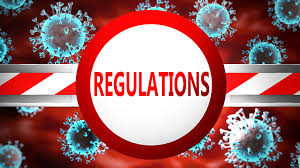| Cal/OSHA’s COVID-19 Rules Now Expired – With Two Remaining Compliance Obligations |
| The Cal/OSHA COVID-19 rules ended on February 3rd – but there are two remaining obligations you are required to continue for compliance. First, the Cal/OSHA rule’s recordkeeping requirements remain in effect until February 3, 2026. Second, Cal/OSHA’s Injury and Illness Prevention Program (IIPP) Rule may be applied to COVID-19 related hazards, and you’ll need to continue to follow its requirements. Keep Up Your Recordkeeping You must continue to record all COVID-19 cases, until 02/02/26, to include: Employee’s name Contact informationOccupationLocation where the employee workedThe date of the last day at the workplace, andThe date of the positive COVID-19 test or COVID-19 diagnosis. You are no longer required to continue conducting contact tracing or excluding workers with COVID-19 from the worksite. Additionally, employers do not have any ongoing obligation for providing notice to close contacts. Continue to Follow the Cal/OSHA Injury and Illness Prevention Standard You should continue to address COVID-19 hazards as necessary under Cal/OSHA’s Injury and Illness Prevention Program (IIPP) Rule, which requires a comprehensive system for identifying, evaluating, and correcting workplace hazards, ensuring employee training on safe work practices, and investigating and reporting workplace injuries and illnesses. Primarily, you should maintain scaled-down procedures for addressing COVID-19 in the workplace, consistent with the IIPP Standard’s general requirements and as appropriate in your circumstances. Cal/OSHA – What to Expect in the Future This year Cal/OSHA is expected to consider a permanent infectious disease standard for most employers applying to future infectious diseases (not specific to COVID-19). If adopted, that standard would impose new prescriptive requirements for addressing infectious diseases including COVID-19. If you work in the Healthcare Industry or outside of California, please reach out to your HR Business Partner today for industry guidelines and recommendations. |









